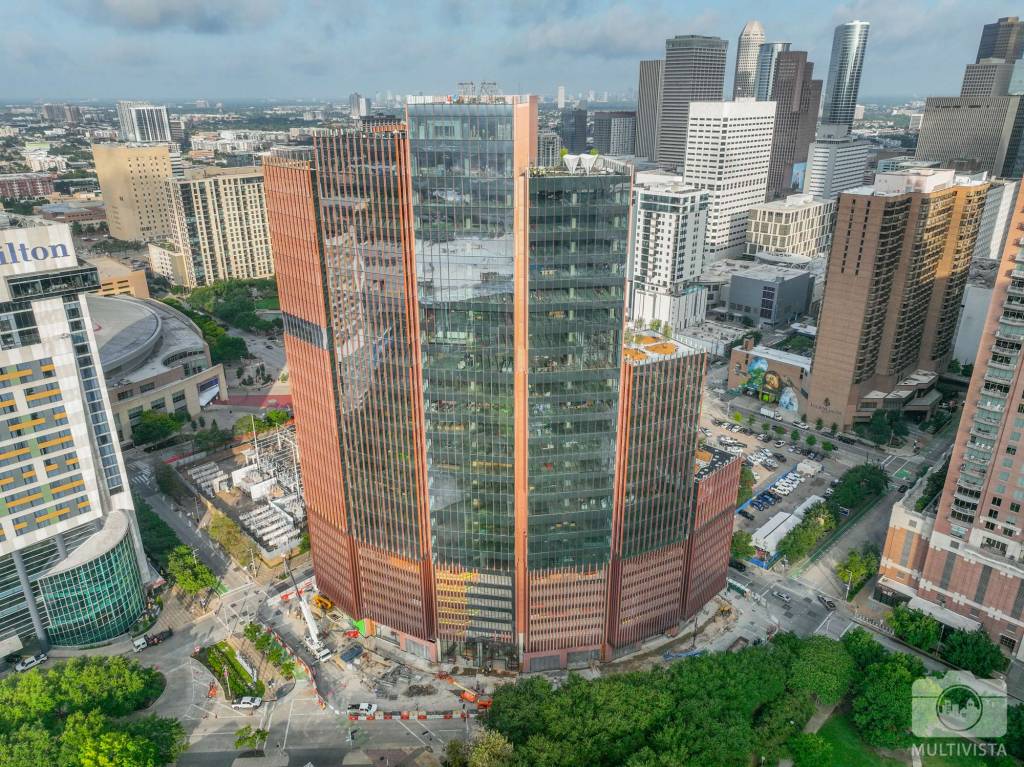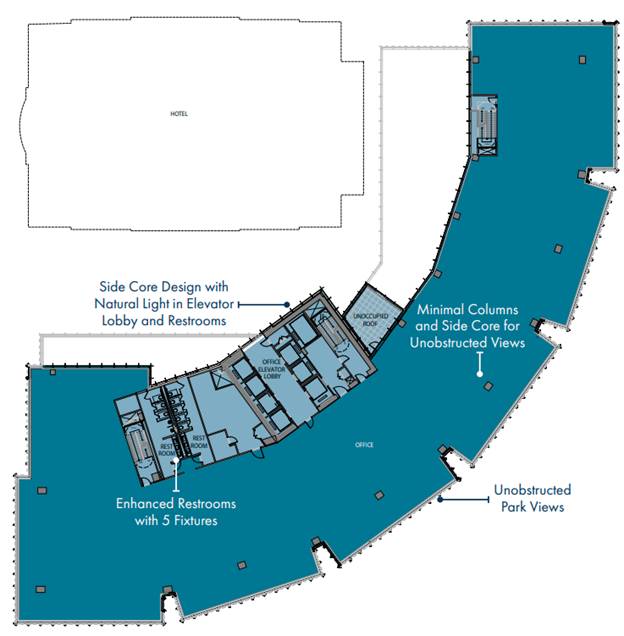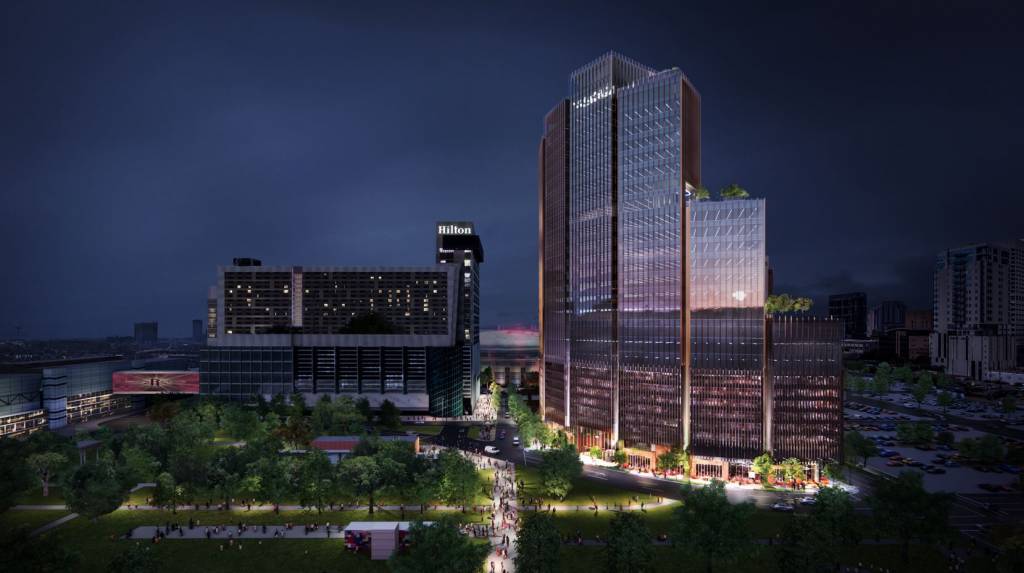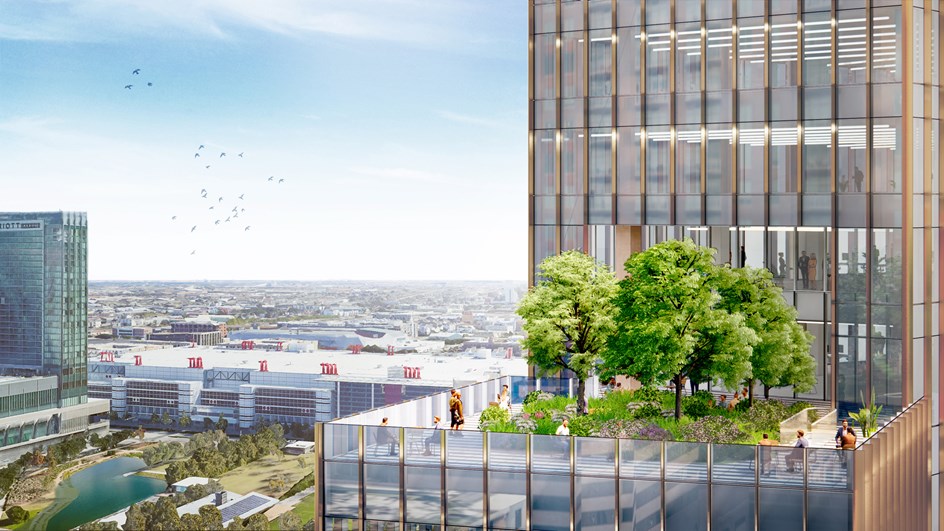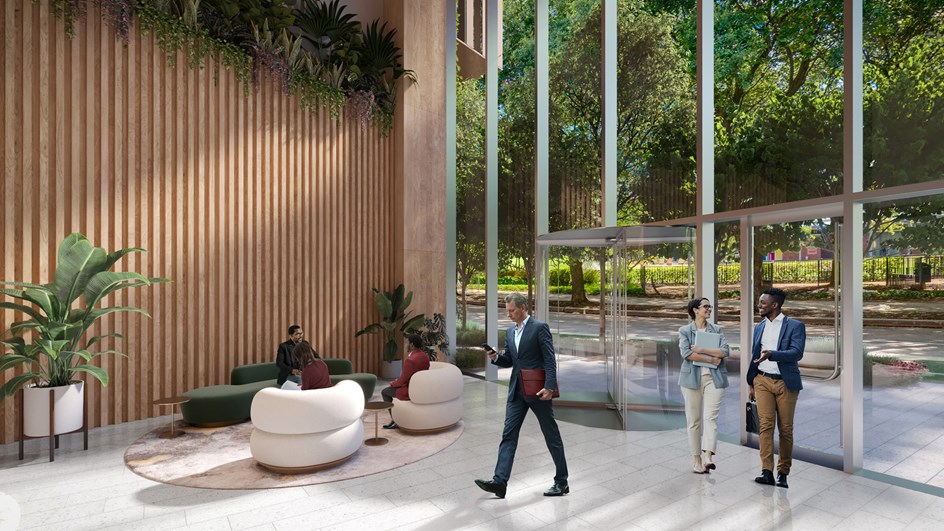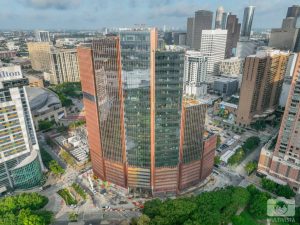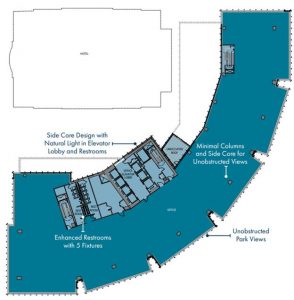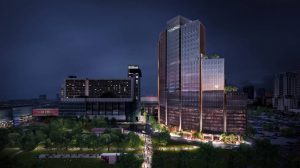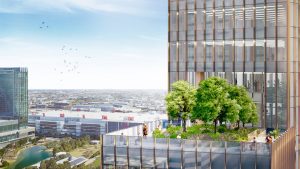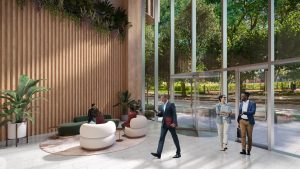1550 on the Green, facing Houston’s iconic Discovery Green Park, is being built in a curved shape, described as a “side-core design”, to allow unobstructed daylight to enter the oversized windows.
The building’s curved design provides views of Discovery Green, more efficient floor plates, and more natural light than traditional floor plates through the building, including the elevator lobby and restrooms. As part of the side-core design, the building’s plan shifts the building’s core—usually considered the elevators, staircases, and piping—to the interior side of the convex-shaped structure.
Both the main vertical/lateral structural elements and the floor spanning systems are constructed from concrete, which is cast-in-place and utilizes steel reinforcement bars and/or steel reinforced concrete, which has been precast as individual components and assembled on-site.
Part of the three-block master plan, all owned by Skanska USA, this building is designed by the architect, Bjarke Ingels Group (BIG). The 34,374 m2 (370,000 sf) office tower offers panoramic views of the park, almost bringing it into the building.
The all-concrete structure is claimed by Skanksa to be Houston’s most sustainable building. The Embodied Carbon in Construction Calculator (EC3) tool was used to account for sustainability throughout this project. The building aims to achieve 60 percent lower embodied carbon than typical buildings, with the use of less carbon-intensive cement. It targets WELL Building Standard and Leadership in Energy and Environmental Design (LEED) platinum V4 (focused on core and shell) certification. It also targets ENERGY STAR rating with characteristics such as 32 percent less energy use, district cooling, demand control ventilation, energy recovery unit, regenerative elevators, a 181,700-liter (48,000-gallon) rainwater collection tank, daylight harvesting, and motion detection in garage.
For occupant health and wellbeing, the building aims to target Fitwel three-star rating, with the air exchange in the building having the capacity to reach 100 percent in an hour, while the building also promises 30 percent fresher air than a typical building. Further, bipolar ionization and air filtration will reduce the presence of airborne pathogens inside the building.



